Welcome Top
This guide is intended to provide both a basic and advanced understanding of how
 Probius
Probius works and how to get the most out of him. This guide does not cover ideal matchups and teammates in detail, but specific types of heroes or compositions
 Probius
Probius performs badly or well against will be mentioned when relevant.
The talent build above is what I find works best against most enemy compositions and allows you the most effectiveness in (almost) all situations. It also has high survivability, which is very important later in the game. The biggest highlights are
 Echo Pulse
Echo Pulse at Level 1,
 Tower Defense
Tower Defense at Level 7 and
 Probius Loop
Probius Loop at Level 20. Level 7 is a huge power spike that improves your Level 4 uptime (
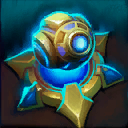 Photon Barrier
Photon Barrier) and is aided by both your Level 1 talent and Level 20 talent. It's the strongest of the Level 7 talents in all situations (although
 Rift Shock
Rift Shock is arguably more versatile due to the potential for more structure damage).
Because
 Probius
Probius has such low cooldowns for his abilities and an infinite mana source, you want to be as active as possible. You want to constantly draw attention to yourself without compromising your position when you're on your own. When you're with your team, you can afford to be more of a nuisance, poking from afar and dealing bursts of damage to enemy heroes who push into your territory.
Learning and mastering
 Probius
Probius comes with understanding how to position and space yourself against every other hero. What you can do and how early you should set up is dependent on what you were doing last, your distance to where you want to be, the cooldown of your
 Worker Rush
Worker Rush, the heroes on the enemy team and where they are. Most of this is true for any hero, but especially so for
 Probius
Probius. Consistency, timing and awareness are key.
Fundamentals Top
Here, I'll cover the core of
 Probius
Probius play and what you'll be doing most of the time during the game. First will be an overview of abilities then some additional general information.
Abilities
In addition to the passive 10% bonus movement speed, you can activate
 Worker Rush
Worker Rush to gain an additional 50% movement speed for 5 seconds. The catch is that taking any damage, including poison damage, cancels the effect entirely.
 Probius
Probius lacks the "Press E to escape" type of ability that most other fragile heroes have, so it's vital you don't get into situations you can't walk (or hover, in this case) away from normally. If you ever get into trouble and damage is kept on you, you will want to delay your activation of
 Worker Rush
Worker Rush until you are out of reach of any abilities, projectiles or basic attacks. This delay is usually the difference between dying and living when escape is possible. Be sure to account for talents and passives like
 Immolation
Immolation from
 Illidan
Illidan that will make this timing more difficult to judge. Furthermore, if you have shields or healing over time that is greater than poison damage you're taking, the poison damage display on your healthbar will be hidden.
 Worker Rush
Worker Rush does not have an extremely long cooldown, but you still want to be careful with how you use it. Besides escaping and avoiding dangerous area of effect abilities, you can use it to make a safe rotation quickly, an unsafe rotation even quicker, rapidly change your positioning during a fight or make it to a distant fight before it's too late. The priorities that affect how you want to use your next
 Worker Rush
Worker Rush change with every factor on the map, and it really makes the difference when you have it available at the right times.
The passive movement speed bonus is particularly useful for evading skillshots and area of effect damage. It makes you surprisingly tricky to hit since you have no reason to basic attack enemies in nearly all cases.
 Probius
Probius does not regenerate mana normally, instead regenerating mana at a rapid rate while in a pylon's area of effect. This is both a boon, since mana is no longer a resource you have to worry about, and a curse, since you must linger in a pylon's range to stay productive, and pylons can be destroyed fairly quick. Therefore, it is important to ensure you always have at least one safe pylon away from obvious view when your position is or will be threatened. If that's not possible, you want to space out your pylon placements so that you are always close to placing down another pylon by the time the other is being attacked.
Don't forget to nab any minerals you can when fighting next to minion waves. If the fight is going especially well very early on, it is possible you can aggressively reposition with a pylon and lock down the area. If your pylons are being focused, you are also able to replace them faster.
When it comes to placing pylons, bushes are an obvious place to put them. Placing pylons in bushes is also good for providing you and your team vision for incoming enemy heroes and rotations. However, sometimes you will want to place them away from bushes but rather around the corner of a wall. These pylons provide little advantage in vision but instead provide the pylon safety from enemy focus and most area of effect abilities. The pylon field is also reachable from both sides of the wall. Find the best positions for your pylons before engaging with enemy heroes or locking yourself in lane and moments where you are helpless without mana become far and few between.
This ability is the most important (non-pylon) ability in your arsenal. In addition to its short cooldown and decent poke damage, it also detonates any
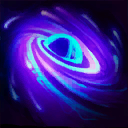 Warp Rift
Warp Rift it hits the center of.
Some other uses of this ability besides dealing poke damage and detonating warp rifts include unstealthing heroes, checking bushes, dismounting heroes, canceling hearths, interrupting objective channels, triggering spell armor shields etc.
When detonating warp rifts with this ability, you want to make sure your
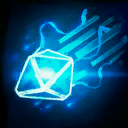 Disruption Pulse
Disruption Pulse also hits as many other targets as possible for additional damage. It's usually that extra kick needed for lethality. For example, when focusing one hero with two warp rifts, try to detonate both and hit with the end of the
 Disruption Pulse
Disruption Pulse to maximize damage output.
This ability is just as important as
 Disruption Pulse
Disruption Pulse. You can use
 Warp Rift
Warp Rift for damaging enemies, zoning, and sometimes just for its 25% slow. No matter how you use warp rifts, you always have to keep the arming time in mind. Getting the most out of your warp rifts means knowing when to detonate them, when to leave them, and where to place them. If the sole purpose of your warp rift is to damage an enemy or enemies, there are a few factors you also want to consider:
- Place the warp rift a variable distance in the enemy's direction of movement. The distance depends on their movement speed.
- If the enemy hero has a movement ability, you want to wait for them to use it first if they are paying special attention to you or seem like they are about to use it.
- Try to place the rift where the primary target will be standing very near to its center when it is armed, or where multiple enemies want to travel through if trying to hit as many heroes as possible.
One more thing on
 Warp Rift
Warp Rift detonation. Generally, casting abilities will cause a hero to cancel any assigned movement orders and stand still until another move order is given. Most people will make another move order immediately after casting an ability, but there is a unique delay for some abilities between when the order is made and when the hero can actually begin moving. For example, this delay for
 Warp Rift
Warp Rift is 0.125 seconds. When aiming
 Warp Rift
Warp Rift at a particular target, you want to cast the ability while they are stuck in these delays to catch them off guard.
Practice timing the detonation of your warp rifts as soon as they are armed. Remember that
 Disruption Pulse
Disruption Pulse has a travel time, so try to launch
 Disruption Pulse
Disruption Pulse just before the
 Warp Rift
Warp Rift actually finishes arming. The previously mentioned delay is also significant in this timing. If you place two warp rifts with optimal timing next to one another, you will need to wait 1.375 seconds to detonate them as opposed to 1.25 seconds before detonating them.
There are also many times you don't want to detonate your warp rifts. Leaving them to expire is a valid option in many cases, especially since they'll detonate on their own at the end of their duration. One such application is blocking an enemy trying to walk back through their gate with a warp rift. No matter which decision they make, walking through and ignoring the warp rift (and potentially taking a
 Disruption Pulse
Disruption Pulse and detonation on their way out), staying against the wall and waiting, they are left in a worse state or position. If they wait, there is an opportunity for your teammates to exploit. This is, of course, assuming the enemy hero is not
 Li-Ming
Li-Ming,
 Zeratul
Zeratul or any other hero with a teleport ability.
You generally want to use
 Warp Rift
Warp Rift as much as possible for any occasion, but there are also many times you want to hold on until you have two available. You could want to blow up a wave quickly, know that the enemy is approaching through a choke point and need to have both rifts available to set up a more impactful trap, need to protect yourself or an ally from an unavoidable close quarter encounter with a melee hero, you're expecting a stun from an ally, and so on. You don't want to be caught in any compromised position or team fight without warp rifts to start with if you can help it.
A high health summon with about as much damage as a
 Disruption Pulse
Disruption Pulse. When placed, they'll attack the nearest target if no enemy hero is nearby or the nearest enemy hero if there are enemy heroes nearby. If the target of the cannon dies, it will reacquire a target according to the same parameters. Because cannons will not retarget until after its target dies, you want to place your cannons in a way that acquires your intended targets first.
The way you use
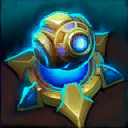 Photon Cannon
Photon Cannon is paramount if you are occupying the solo lane. Cannons are your less temporary zoning tool. You usually want to place cannons in your pylon fields, except for when their purpose is not to deal damage but to interrupt another enemy (such as mounts and channeling). They're either being destroyed, ignored or avoided. There are three main types of placements for your cannons during encounters with enemy heroes:
- Defensive cannons are placed out of the immediate range of any enemies. You want to place defensively when you want a cannon to react to enemies focusing their march on you and last the full duration. With this type of usage, you want to establish a line between you and the enemy. This is also a good placement when you know you can't push forward by the time you get your next cannon.
- Passive cannons initially pose little threat to enemy heroes. Think a cannon placed somewhere near the center of the middle lane at the start of the game. It will probably be targeting minions or summons the majority of its life. If the position is an otherwise good place for a cannon and you plan to clear the lesser priority targets shortly, passive cannons can become either of the other two types if they are not destroyed too quickly.
- Aggressive cannons are isolated, placed close to enemy heroes and typically destroyed very quickly. You want to place aggressive cannons when you are going for the kill and need that extra damage, want to interrupt channeling, or need a temporary zoning option to secure your position. This type of placement is fine if you are sure you don't need to place a cannon elsewhere for the next fifteen seconds.
In the solo lane, you'll (mostly) want to place your cannons defensively. You can poke at max range with
 Disruption Pulse
Disruption Pulse, deny space and position with
 Warp Rift
Warp Rift, and punish unsafe pushes with
 Photon Cannon
Photon Cannon.
The Vision Game
Vision affects everything in both your decision-making and that of the enemy's. Vision is especially important for
 Probius
Probius who would otherwise be predictable to a fault. You want to be out of the enemy team's vision for as long as possible when you aren't actively attacking them during fights.
Luckily,
 Probius
Probius has plenty of ways to generate vision on the map. Pylons,
 Photon Cannon
Photon Cannon,
 Disruption Pulse
Disruption Pulse and
 Warp Rift
Warp Rift all provide vision. You want to keep sight of enemy heroes while staying out of their sight. This type of vision manipulation lets you get away with things that would be expected by your positioning alone, such as warp rifts in a bush or around a corner.
Assume you're on a three-lane map at the beginning of the game. Your last known position is in the middle lane, and the enemy team sees you use
 Worker Rush
Worker Rush to rotate to the top lane. At the same time, a pylon you set in a bush on the enemy's side reveals another hero,
 Nova
Nova, noticing this and walking up to attempt to intercept you. To stop and potentially kill you, they have to take the unsafe route through a bush. Assuming they aren't wise and don't scout the bush with a clone first, you, two warp rifts and a cannon in that bush are about to inspire fear into that
 Nova
Nova for the rest of the game.
The distance, time to arrival, time since leaving vision and the last known position of every hero is of great importance to anyone with developed map awareness.
 Probius
Probius can take advantage of this often while remaining in safety provided you keep the same or better awareness. You might also find that simply staying out of sight when your presence is expected is its own way of zoning, too.
Something typically overlooked is that some actions reveal yourself for a brief period of time even when out of the regular vision range of heroes.
 Disruption Pulse
Disruption Pulse and
 Warp Rift
Warp Rift detonations no matter the source will reveal you to affected enemies. Staying aware of this is extra important when facing heroes with long-range "inevitable" abilities like
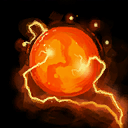 Pyroblast
Pyroblast or
 The Hunt
The Hunt. Killing minions will also reveal you, even if they are killed from an automatic detonation of a
 Warp Rift
Warp Rift. It can be particularly dangerous to be seen this way if you plan on rotating immediately after. If you're interested in a more detailed view of these interactions, check out the link
here.
Blocking with Summons
Summons block most skillshots from heroes. This is extremely important to keep in mind when playing
 Probius
Probius, as you can usually guard yourself against most heroes with smart placement. As you push forward in fights, ensure there is something between you and the enemy team. Typically, it will be a
 Photon Cannon
Photon Cannon, but in a hurry you can also use pylons. You can block hooks from
 Stitches
Stitches,
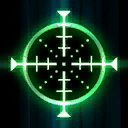 Snipe
Snipe from
 Nova
Nova,
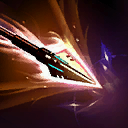 Storm Bow
Storm Bow from
 Hanzo
Hanzo,
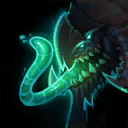 Drag
Drag from
 Dehaka
Dehaka, the applications are (almost) endless. This is why good placement of your pylons and cannons are key to avoiding damage and safely securing opportunities. Note that you can also block skillshots that are aimed at your allies. If a retreating ally is nearly dead, and a
 Hanzo
Hanzo means to shoot them, you can block the shot with a summon as you would for yourself. This doesn't always work out, but it's something to keep in mind.
Safe Macro
 Probius
Probius is extremely susceptible to ganks, both during rotations and from enemy rotations. You should always be keeping vision in dangerous bushes with your abilities when enemy heroes disappear. When sieging, you want to keep track of when enemies rotate and how long it will take them to arrive. If you're suspicious enough, it's better to get back to your towers as soon as possible without delay. If you're about to do something to attract rotations, make sure you have
 Worker Rush
Worker Rush available before doing it.
Be patient when laning. Due to the advantage of pylons, you should want to stay in your lane for as long as possible (or at least until your opponent's mana is out) if solo laning. You should prioritize taking as little damage as possible while poking your opponent and clearing waves. If your opponent is not visible, assume they are hiding in a bush or around a corner. You can clear waves very quickly and safely, so don't fret too much if you have to stay back and wait for the wave to push into you. Even if enemy heroes with long-range abilities opt to damage towers or forts from afar, you can usually poke them bit by bit as they're doing so.
A general rule is to always ensure you are safe before showing on the map for long periods of time. If you spend too much time damaging enemy structures, chances are some members of the enemy team is already on their way to you from multiple angles. Because
 Probius
Probius struggles with reactively escaping bad situations, time your escape for when you know enemies are beginning their rotation towards you. As previously stated,
 Probius
Probius can clear waves easily while still finding opportunities for poking his lane opponents. If a gank is attempted in the early game and you avoid it, but they stick in your lane afterwards, there is little threat to you as you defend your structures.
When rotating, there are two ways you can do so. The first is an unsafe rotation and the second is a safe rotation. Unsafe rotations are the ones that either meet with the enemy team's side of the map or are easy to invade. A safe rotation is whichever rotation is further on your team's side of the map. An unsafe rotation can be safe, and a safe rotation can be unsafe. The primary difference between these rotations is how long it takes you to arrive at the wave. With
 Worker Rush
Worker Rush, you can shorten this distance considerably for both types of rotations. If enemy heroes are off the map for long periods, you'll probably want to take the safe rotation.
Expected Struggles Top
As stated multiple times throughout this guide,
 Probius
Probius is not a very tanky hero. Sporting just 10 less Health than
 Li-Ming
Li-Ming, and having no abilities for damage reduction or evasion, surviving both short and extended fights as
 Probius
Probius requires avoiding kill threats entirely. Often, any stun or displacement that affects you will be deadly. For this reason, it's imperative you have the micro, awareness and reaction time to steer clear of skillshots and danger zones. Being damaged early in any encounter can mean missing opportunities that would occur shortly after if you were not at too vulnerable a state. There are, of course, times when trading health is necessary to secure some form of advantage. Just ensure you are not put into a bad position for too long after following up on these opportunities.
Mobile heroes are the bane of
 Probius
Probius, especially heroes with instant teleport or repositioning abilities. Heroes such as
 Tracer
Tracer or
 Lúcio
Lúcio will catch you out of position and punish your inability to efficiently escape. For these heroes, you are usually forced to take a stand by placing down a
 Photon Cannon
Photon Cannon and
 Warp Rift
Warp Rift below yourself and launching
 Disruption Pulse
Disruption Pulse at the enemy hero while circling the cannon. If they get low enough, you might be able to kill them with
 Worker Rush
Worker Rush and a well-timed perfectly aimed
 Disruption Pulse
Disruption Pulse. If they retreat before getting low, that's typically your cue to run as well. The difficulty with these heroes is that while
 Probius
Probius can afford to trade with them (although mostly unfavorably), it's hard to do this when any other enemy hero shows up with them. Staying still and playing peek-a-boo with warp rifts works only against one target. If the heroes have stuns that pierce your summons, you're probably dead if you get hit with any of them. This means it's hard for a
 Muradin
Muradin or
 Dehaka
Dehaka to get a free kill via proximity, but a
 Blaze
Blaze or
 Imperius
Imperius can do so much easier. To summarize, a lone
 Zeratul
Zeratul can potentially be warded off with static defense, but any additional hero that you must employ more mobile self-protection towards will make the encounter far harder.
The objective in these close proximity pressure scenarios is to block any projectiles and use
 Warp Rift
Warp Rift to both slow if trying to make a break for it and to damage enemies wanting to stick in your face. Anticipate these situations so that you have your pylon, at least 1
 Warp Rift
Warp Rift and
 Photon Cannon
Photon Cannon available. For example, against
 Tracer
Tracer, you want to let your
 Photon Cannon
Photon Cannon deal damage as she stays close, punish any movement mistakes with
 Warp Rift
Warp Rift, deal additional damage with
 Disruption Pulse
Disruption Pulse, and block
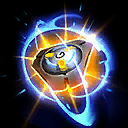 Pulse Bomb
Pulse Bomb by kiting around the
 Photon Cannon
Photon Cannon. This is tricky to pull off and differs for every hero capable of closing distance and sticking onto you afterwards. Against mobile ranged heroes, you don't want to be in these situations at all. There is a list below for heroes that will give you the most difficulty in this regard along with some tips.
 Zeratul
Zeratul (hopefully you have
 Photon Barrier
Photon Barrier!)
 Tracer
Tracer (also good to have
 Photon Barrier
Photon Barrier if you can't block the
 Pulse Bomb
Pulse Bomb, try to kite basic attacks with bushes)
 Lúcio
Lúcio (unlikely to chase you alone for long unless you're low health, most of your return damage will be dealt by
 Photon Cannon
Photon Cannon)
 Dehaka
Dehaka (with a speed build, this can be really tricky if you don't have all of your warp rifts available)
 Murky
Murky (with
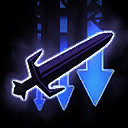 Time to Krill
Time to Krill stacks or
 Slime
Slime slow on you)
 Rexxar
Rexxar (unlikely, but you don't want to be out of bear range at all times)
 Nova
Nova (also rare, you need to make repeated positioning mistakes for her to stick)
 Fenix
Fenix (avoid a direct encounter always)
 Valla
Valla (with repeated vaults,
 Death Dealer
Death Dealer can do this early on)
 Falstad
Falstad (deals a lot of damage quickly and without repercussion from your abilities, better off just avoiding entirely)
 Malthael
Malthael (can spread mark to you via summons, prioritize poking him before he gets too close)
 Samuro
Samuro (effective use of warp rifts is very important,
 Photon Cannon
Photon Cannon does little)
 Illidan
Illidan (similar to
 Malthael
Malthael, don't let him close when he's at full health or you have no threatening counterplay)
 Genji
Genji (zone with rifts, stay out of range of all three shurikens, setup early)
 Li Li
Li Li (small but consistent damage with reliable mobility, hard to damage significantly with abilities in close proximity)
 Orphea
Orphea (dodge her initial
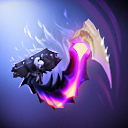 Shadow Waltz
Shadow Waltz and the rest of the escape is zoning with
 Warp Rift
Warp Rift and dodging her other abilities)
 Lunara
Lunara (
 Photon Barrier
Photon Barrier is a must, poison will counter your attempts at escaping with
 Worker Rush
Worker Rush and the slow from
 Crippling Spores
Crippling Spores is deadly, poke her from a safe distance and do not walk into her effective range)
Team Fights Top
Although
 Probius
Probius performs very well in the solo lane, the best occupation for
 Probius
Probius is where he can make plays with his team. You want to have as little visible presence in team fights as possible so that your actions are not so easily avoided. You can and should always exploit the moments when eyes are off of you and on your allies, as these moments will be the source of the majority of your opportunities.
Being able to clear minion waves instantly means you can usually clear a minion wave or two before arriving at engagements due to
 Worker Rush
Worker Rush speed. Most times, you can afford to arrive at a team fight a little late so long as you can position correctly, can set up immediately out of harm's way, and time your arrival to be when you would have the most impact.
To illustrate this, imagine you're on Cursed Hollows and a tribute is spawning between the middle and bottom lane on the left (enemy team) side. The enemy team is holding a position on the center bush while your team is approaching from the right side. As this is happening, you are rotating from top to middle after clearing a wave. The only position you can reliably set up in this scenario is the upper region of the point of contest, which would be the bush between both teams. If you are anticipating this situation, you could set up in advance at the bush and potentially secure a push into the enemy's territory for your team.
It is important that you time your reveal to the enemy team. If the enemy team is pushing into your team, you should ideally have pylons set up reaching both directions the fight can go, then make your play. If the enemy team isn't paying enough attention to you, you can usually hit both of your warp rifts on the frontline as the fight starts. Combined with
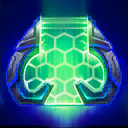 Null Gate
Null Gate, this can be turned into an especially dangerous scenario for the enemy team.
Sticking with your team also grants you a symbiotic connection
 Abathur
Abathur wishes he could achieve. Assuming you and the enemy team have some semblance of a frontline, you can opt to punish engages on your allies with warp rift combos. Eventually, the enemy team will probably catch onto this pattern and try to zone you out first before making any plays. This will happen very often with stealth heroes, so try to think ahead and keep them out of your vulnerable angles. However, if this sequence is successful, your team will have already won some form of positional advantage for you to utilize for safety.
Of course, you can't always stay hidden before your team clashes with the other. Even still, it's important to stay somewhat unpredictable. If bushes are nearby, and the enemy is not too suspicious of them, use them. After attempting a play, walk back and wait for the snapshot vision to time out before making another push forward. When you find your opportunity to stand in vision and repel the enemy team, you should absolutely do so.
 Probius
Probius does not chase heroes well, so you want to deal plenty of damage where you are so that your team can hopefully finish the job quickly if they get too far.
What if your team has already pushed the enemy team back and you still want to participate? This could be an excellent opportunity to position on the enemy team's escape route and act as the hard place to your team's rock. It's fairly risky, especially against heroes like
 Diablo
Diablo or
 Illidan
Illidan who can use you as their escape or reinitiation, but done successfully it can be the extra threat needed to secure critical kills for your team. This is another situation
 Null Gate
Null Gate can help to force. If you're expecting this type of scenario, you can even
 Worker Rush
Worker Rush to the position required. This, however, could also fall through, and the enemy team successfully turns back on your team, making it difficult and dangerous for you to reposition and wasting your cooldowns.
In a nutshell, play with the space you have, and take opportunities to push further. Make small conquests until you can find the opportunity to exploit the weaker enemy position. Reinforce and defend the space you take and try to keep pylons that you can't replace when that space is lost. So long as you have some safe ground to stand on, you can poke and disrupt the enemy team. If the enemy team makes the mistake of forfeiting position, try to exploit it when you can, but ensure you're not leaving your team in a bad situation for too long in the process. Try to establish situations where the enemy team cannot easily touch you, but the best outcome is directly tied to reaching the territory you're occupying. Similarly, if the enemy has a particularly strong position to hold against yours, try to occupy or trap it before they can get too comfortable.
Talent Overview Top
Here, I'll give a detailed perspective of each talent tier, the synergies and viability of each talent and how you should want to play with each one. I believe that no matter what your build is,
 Probius
Probius performs similarly well with good play. The part that separates the effectiveness of each build is the ability for you to zone enemies in certain scenarios. With the General Build at the top of the page, you are able to zone enemies out of a territory you have controlled or punish enemies that push too far into that territory. More often than not, you can only do one or the other, so choose your talents depending on the most likely or most forceable situation if you deviate from that build.
Level 1
This is the most versatile talent in this tier.
 Echo Pulse
Echo Pulse allows you to play boomerang with your
 Disruption Pulse
Disruption Pulse and deal extra poke damage on its return. It will also detonate any
 Warp Rift
Warp Rift on its way back, which means you can potentially create warp rifts
late and surprise anyone not paying attention as you're walking back from them. It creates a plethora of opportunities for plays during escapes and (if you're already behind the enemy team) during chase. It also extends the scouting you get out of the ability.
It should be noted that although the damage from
 Disruption Pulse
Disruption Pulse is little, it still adds up. Effectively doubling the projectile is especially powerful for zoning the enemy further and making their movement more predictable. If you use the
 Echo Pulse
Echo Pulse to zone one direction of movement towards you and a
 Warp Rift
Warp Rift to zone another in a lane, the enemy is typically left with only one direction to go in if they want to continue approaching forward. In this same time,
 Disruption Pulse
Disruption Pulse comes off cooldown and you can launch it again and repeat this dance for as long as they remain in range.
Delaying your
 Warp Rift
Warp Rift detonation with this talent also lets you mischievously play with the expectations of your enemies. If someone is low health and retreating back behind their towers in lane, chances are (if they've learned by now) they don't want to walk into a rift you've placed there and will wait for that
 Disruption Pulse
Disruption Pulse you shot pre-emptively to come back. Three things can happen now:
1) The enemy walks away from the rift and waits, but you disjoint your
 Echo Pulse
Echo Pulse so it doesn't detonate immediately and position yourself to place another rift and further delay their safe route of escape.
2) The enemy walks away from the rift and decides to retreat through another route, risking walking into any hero on your team that was looking to gank at that time.
3) The enemy tries to make a neutral or better trade by damaging you and making it too risky for you to push towards them. Say an
 Imperius
Imperius attempts to stab back into you and heal a small bit while putting you at the same health state. If you predict or dodge the stab, you can exploit their position afterwards with a well-placed
 Warp Rift
Warp Rift and well-timed detonation. You could also guarantee a kill with
 Null Gate
Null Gate since their escape ability is gone. Distancing properly from your
 Disruption Pulse
Disruption Pulse both before and after launching it is key to pulling off this type of area denial, and it is not always possible with other enemy heroes nearby.
The primary disadvantage of this talent is that it's on the same tier as
 Echo Pulse
Echo Pulse. Hitting Warp Rifts accurately on enemy heroes is imperative to making this talent work. The additional warp rift sounds like a neat bonus, but it doesn't provide very much. Ideally, you shouldn't be holding warp rifts up to maximum for very long in team fights or lanes. Landing three warp rifts in a row is also very difficult, and impossible in most cases.
An important thing to note is that
 Warp Rift
Warp Rift costs 150 Mana to cast. This means that if you place all three warp rifts in a row, you won't have enough mana to immediately detonate them afterwards if there is no pylon near you as you place them. Ensure that you don't lose both your pylons during fights so you can afford to keep placing rifts.
On maps with many bushes, choke points, and other predictable engagement routes, this talent can work quite well in dealing damage and keeping cautious enemies out of a particular entryway. The additional warp rift means you can zone areas longer from melee heroes or deal devastating damage if they ignore it. Pairing this talent with
 Rift Shock
Rift Shock increases your
 Warp Rift
Warp Rift damage a ton, which is great for games when you get to hit structures often or objectives like the one on
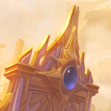 Battlefield Of Eternity
Battlefield Of Eternity.
More health for our cannons is very nice, and the damage boost also makes each
 Photon Cannon
Photon Cannon that much more impactful when they are ignored. This talent has good synergy with
 Tower Defense
Tower Defense as well, as you can gather more boosted cannons to harass enemies. If you prefer a primarily defensive and static playstyle, this is the talent.
The negative, again, comes from the fact that this talent competes with
 Echo Pulse
Echo Pulse. However, there is an additional layer to why I don't opt for this talent very much.
 Echo Pulse
Echo Pulse has far better synergy with
 Tower Defense
Tower Defense, as your
 Disruption Pulse
Disruption Pulse can further decrease the cooldown of
 Photon Cannon
Photon Cannon on its return. In combination with two or more
 Warp Rift
Warp Rift hits, you can set up extremely quick defensive fronts against enemies trying to inch their way into your team during fights and/or earn yourself a safe place to occupy.
Additionally, as mentioned in the
Fundamentals chapter, cannons will target the nearest enemy hero on creation and reacquisition. Cannons can become less impactful in fights if summons or minion waves are nearby for the enemy to redirect attention to. A solution to this problem besides more precise cannon placement is simply to place more cannons more often, which the
 Echo Pulse
Echo Pulse and
 Tower Defense
Tower Defense combo excels at. If the enemy doesn't want to be shot at, walking away until it retargets becomes less of a guarantee when you can just place another cannon in range of them. More cannons can also zone more points at a time than the lesser average number of cannons with
 Gather Minerals
Gather Minerals.
Level 4
The spell armor from this talent is a massive boost in survivability, even if there are little to no mages on the enemy team. The downside is that at least one
 Photon Cannon
Photon Cannon must be alive and powered in order to keep the bonus. With this talent, you want to place a
 Photon Cannon
Photon Cannon somewhere hidden and safe if you plan on getting deeply involved or expect to take a burst of spell damage shortly.
In games where you have to rotate a bunch or the enemy team's damage is less guaranteed and requires you to be within a certain avoidable distance, or fights are too short for any amount of armor to make a difference,
 Turbo Charged
Turbo Charged is an excellent option. It means you forgo the more upfront survivability of the other two options, but mobility can serve as survivability as well. The extra movement speed and decreased
 Worker Rush
Worker Rush cooldown means you can get away with more aggressive plays more often. It also means you can reposition in and out advantageous positions quickly and more often. This is especially useful in games where the enemy team carry too much threat for you to do so otherwise.
In games where the macro is entirely your responsibility, this talent is almost mandatory. You can usually keep up with soaking two lanes while also getting to team fights in a timelier manner so long as you time your
 Worker Rush
Worker Rush properly. It really makes all of the difference in tougher games.
I would say this talent unlocks a level above the regular skill ceiling for
 Probius
Probius. When it's a safe option, you can pull off plays and strategies that are normally too difficult to position for.
You could call this talent a combination of the other two talents in this tier. You get survivability without the cost of using one or two of your cooldowns and can afford to move around with less of a tether as a result. This talent works particularly well against low but consistent poke damage, specifically poison damage. The shield will recharge even as the poison ticks, so it can be good versus
 Lunara
Lunara (but really
 Photon Barrier
Photon Barrier is more effective even in this case). The main boon is that attack damage will also be blocked, which can be significant in a few cases. If you suspect you won't be taking non-poison damage, and that damage is less of an immediate threat,
 Shield Capacitor
Shield Capacitor is not a bad option to give yourself more generalized protection. This shield also stacks with
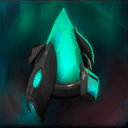 Shield Battery
Shield Battery.
Level 7
Minor cooldown reduction packaged with a fairly underwhelming effect. This talent is by no means bad, but its unique effect is not very impactful. The additional pulses are not created at the origin of the detonated rift, so even heroes at the center will only be hit by one or none of the pulses. Not to mention the lackluster damage of each pulse. To compare,
 Rift Shock
Rift Shock adds more damage to your rifts in all contexts without the need to charging it up. It's a good talent if you plan to take Shoot'em Up later, but it provides little but a quicker
 Disruption Pulse
Disruption Pulse on its own.
This is effectively a simple damage increase for
 Warp Rift
Warp Rift. Playing somewhat optimally, you'll be hitting your warp rifts less than a second after their arming anyway. This improves your structure, mercenary, and hero damage significantly. Always a safe talent to pick.
The value of this talent cannot be understated. Without this talent, your one
 Photon Cannon
Photon Cannon is functions only as a deterrent. With this talent, you get to place multiple cannons so long as an enemy hero is nearby to damage with your other basic abilities. This means the longer a fight goes, the more dangerous it becomes to push into your position. This also means that you can easily replace destroyed cannons, meaning you can use them much more freely.
This talent is not always the best, however. If it is too difficult or risky to enter the effective range needed to damage enemy heroes with your abilities, the other two talents in this tier are superior. This is also true if you're photon cannons are placed under immediate threat, intentional or otherwise, when they are placed. If you're feeling especially
homeless by this point in the game, consider the other two talents,
 Particle Accelerator
Particle Accelerator in particular if you really can't hold a position even when supported by your team.
Level 10
To be honest, I am far less experienced with this heroic than with the other. Initially, I believed there was a case in games with more mobile heroes and shorter fights that this heroic would be preferable over the other. After having played
 Probius
Probius longer, I stopped picking this heroic entirely, and I now believe that
 Null Gate
Null Gate is the better option in every context.
This heroic requires setup and a healthy bit of precognition to get the most value out of. At worst, you have effectively summoned two long-range cannons. At best, you burst a single hero in combination with your other abilities. For its impact and ease of evasion,
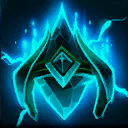 Pylon Overcharge
Pylon Overcharge really doesn't do that much damage. It will zone cautious heroes away the same as a
 Photon Cannon
Photon Cannon would, but it deals insignificant amounts of damage if they choose to ignore it. The beams will always attack the closest target, so they will likely get split before any impactful damage is dealt. Its longer cooldown also makes it not viable to simply use as a safe poking option.
Its upgrade at level 20 turns it into more of a viable option and gets you an additional pylon. Still, it's difficult to kill solo enemy heroes out of position without assistance with this heroic and doesn't enable any of your other abilities or let you play more dynamically. Overall,
 Pylon Overcharge
Pylon Overcharge is pepper spray for split teams and enemies diving you (but not when there are multiple).
The slow and area denial provided by
 Null Gate
Null Gate is a massive offensive utility. Keep in mind that it has a short delay (0.125s) before it fully forms, so you want to try to place it so that the targets walk into it rather than directly over them. This obviously doesn't apply when an enemy hero is expected to be walking completely vertically or horizontally, you want the gate to overlap their center in this case. However, these types of gates also are easier to dodge, whether accidentally or intentionally, so you can try to curve them if you anticipate their sidestep.
With a properly placed
 Null Gate
Null Gate, you can guarantee a warp rift combo and prolong exposure to photon cannons. Your team also gets more time to take advantage of the slow. They might not stay in the gate for the full duration, but about 3 seconds is usually good enough for a quick kill if they're not so tanky. Against heroes with movement abilities, you'll want to wait for them to use them before attempting to trap them. If their abilities are dependent on having a target nearby, like Diablo's
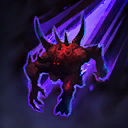 Shadow Charge
Shadow Charge, you can usually execute a less reliable combo at a safer distance out of its range.
 Null Gate
Null Gate also has many applications for saving yourself and allies. The same advice about movement abilities applies here. If an Illidan dives onto you and uses their
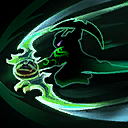 Sweeping Strike
Sweeping Strike without blocking you afterwards, a well-placed gate placed as the dive occurred followed by activating
 Worker Rush
Worker Rush immediately after the last basic attack hits you is enough for you to escape that situation. Unless he has
 The Hunt
The Hunt or a movement speed buff, he can't get back in range for another dive. In combination with the knockback and interrupt from
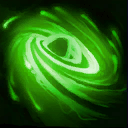 Interference
Interference, you can get away with some nasty escapes even if they properly body block you.
You can also use gates to block methods of engagement. If the enemy team is coming through a moderately-sized choke point that can be blocked by a gate, you can typically motivate at least one hero to go another way. This also applies in the middle of team fights. You can discourage melee heroes from running back to their backline, losing their support while you harass them further. Meanwhile, your team is taking a fight with a numbers advantage.
Even versus heroes like
 Zeratul
Zeratul, who can seem like he never stops teleporting, a well-timed
 Null Gate
Null Gate after tracking their blinks and cooldowns can secure a kill. To make these types of plays, however, you'll likely need to use
 Worker Rush
Worker Rush. Another strong interaction is
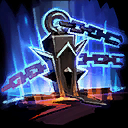 Lamb to the Slaughter
Lamb to the Slaughter from
 The Butcher
The Butcher. If you or any other hero is charged, you can place a
 Null Gate
Null Gate and warp rift combo to punish their charge. If they place their
 Lamb to the Slaughter
Lamb to the Slaughter with enough room, and you placed your
 Null Gate
Null Gate accordingly, the
 The Butcher
The Butcher is left critically slowed, and you can walk to the edge having taken only two or three basic attacks and wait for it to expire. Furthermore, if they took the
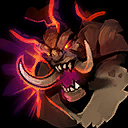 Ruthless Onslaught
Ruthless Onslaught spell armor talent,
 Null Gate
Null Gate also gives you some freedom to wait until the spell armor expires before detonating your rifts for maximum damage.
Level 13
Although the attack damage increase here is noteworthy, it is hard to keep pylons near the allies that would benefit most from this talent.
 Sgt. Hammer
Sgt. Hammer is one exception, but even still I find this talent to be too conditional in most games compared to the other two.
The appeal of this talent is less so the mana regeneration but the additional spell power. It isn't very significant amount of spell power, and it is hard for other heroes to deliberately benefit from, similarly to
 Aggressive Matrix
Aggressive Matrix. This talent isn't a bad choice if you find you benefit more from its damage increase than from
 Shield Battery
Shield Battery.
The shields from this talent provide a surprisingly high amount of survivability, notably against poison damage-over-time. With this talent, you can also shrug off most forms of poke damage as well. On top of that, you're providing this to all of your teammates in your pylon radii. It's not burst healing by any means, but its strong enough to be a good pick all around.
Level 16
This talent allows the slow from
 Warp Rift
Warp Rift to have some lasting impact even after heroes walk out of it or it is detonated. It's a simple upgrade that can make affected enemies more susceptible to any follow-up, including warp rifts you place during the slow.
The effect of this talent is not very reliable. Most heroes will stick to the edges of the rifts they do walk into and walking any closer than that is a rarity. Since rifts only last three seconds before detonating themselves, you probably won't get the full slow for three seconds either. On the other hand, heroes at higher movement speeds will tend to extend into the center more often as a result and be open to opportunities they otherwise wouldn't be without
 Gravity Well
Gravity Well.
At first, this talent might seem a bit underwhelming, and its knockback may seem more of a drawback than a benefit. However, I would argue this talent is actually one of Probius's best. If you're worried about ruining pivotal opportunities, you have to think differently with how you place and detonate your warp rifts. You can delay detonating your warp rifts if an enemy hero is stunned and they would be pushed away from your team. Assuming you're positioned correctly and in time, you could also detonate one or both warp rifts on the other side of the enemy hero to push them into your team. Speaking of which, to get more out of the knockback from this talent, detonating both warp rifts at the same time will add the forces together.
The knockback is only one part of this talent, and not the part that makes it so strong. The other major effect is 35% spell power reduction for 5 seconds. The uptime of this effect alone can be the difference between winning and losing fights. When a fight starts, you want to try to hit enemy heroes who would be most affected by this early, such as mages like
 Li-Ming
Li-Ming. Your team will take much less damage on initiation and afterwards if you keep this going, in addition to any zoning of the backline you manage to pull off. This also makes it possible for you to kill any overconfident Zeratuls (though definitely not guaranteed) or Valeeras in the late game. Getting an early
 Warp Rift
Warp Rift detonation as they latch onto you sets up for a kill seconds later or takes them out of the immediate fight. All the while, you're still healthy enough to stick around for a few seconds more. It can be hard to fight against teams that have the bulk of their damage on initiation in combination with various other disabling effects, especially for a hero as fragile as
 Probius
Probius, and this talent gives you and your teammates some extra time to deal your damage.
While you will still make mistakes sometimes and may accidently hit enemies out of range of allied heroes with potential kills, the strength of this talent is worth it. As you gain experience with it, the frequency and severity of these mistakes will become less.
Level 20
If you took
 Pylon Overcharge
Pylon Overcharge at Level 10, this talent might as well be mandatory. An additional pylon and damage bonus doesn't make this talent a surefire advantage on activation but massively improves its zoning and poke damage. Not to mention, having three pylons also gives you a failsafe for the usual conundrum that occurs when you lose two pylons at once.
This talent may seem good on paper, but any enemy team that is decently aware will catch on to the positions of your enabling pylons. The thinking to find your pylons is similar to that of finding a Murky's egg with the
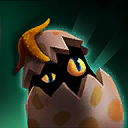 Fish Eye
Fish Eye talent, but with a shorter distance to consider. The gate is also easily bypassed by heroes with mobility abilities, like
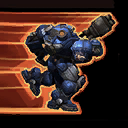 Run and Gun
Run and Gun from
 Tychus
Tychus and most tanks.
Overall, this talent tends to fall short in comparison to other options because
 Null Gate
Null Gate is not a very reliable
wall in the literal sense. Its slow is valuable because it can be unexpected and cut off escape paths, but placed statically at a choke point it serves only as a light deterrent more so than a substantial risk. If someone deliberately walks through a placed gate, it's highly unlikely they mean to walk back anytime soon. I personally have not found any particular success as a result of choosing this talent or found the less temporary
 Null Gate
Null Gate very impactful, so I don't recommend this talent.
If you chose
 Particle Accelerator
Particle Accelerator at Level 7, this is the talent you want to consider the most. This adds some additional damage to
 Disruption Pulse
Disruption Pulse (especially against armored targets) and decreases the cooldown to a potential 2 seconds with
 Particle Accelerator
Particle Accelerator. It's not the most impressive talent, but it's a good upgrade that can increase the rate of your poke damage significantly.
I am heavily biased towards this talent. Similar to
 Echo Pulse
Echo Pulse, and in combination with
 Echo Pulse
Echo Pulse, it consistently doubles your damage output with
 Warp Rift
Warp Rift. With this talent, the typical
 Warp Rift
Warp Rift on a choke point virtually becomes a longer, higher damage
 Null Gate
Null Gate if enemy heroes are insistent on passing through it. Even if it only hits once, you are denying safe movement for 8.5 seconds. In fights, you can usually multiple uses out of singular warp rifts.
If you have
 Interference
Interference, there is lots you can do with
 Null Gate
Null Gate and this talent. One of those things is trapping an enemy at the center of a
 Null Gate
Null Gate, setting two parallel warp rifts, and detonating one as the other explodes. Properly executed,.the enemy is guaranteed to take 4 warp rifts before leaving the gate. It also keeps them inside and interrupts any abilities they could cast.
This is a direct upgrade to
 Warp Rift
Warp Rift which expands its potential exponentially throughout fights. If you can hit enemies with your warp rifts with any moderate level of consistency, this is a very strong talent.
![]()


Quick Comment (1) View Comments
You need to log in before commenting.